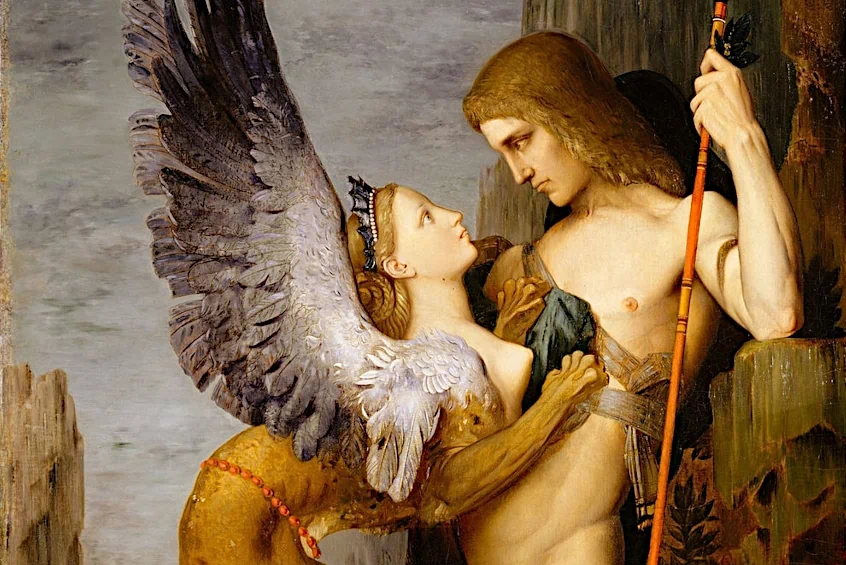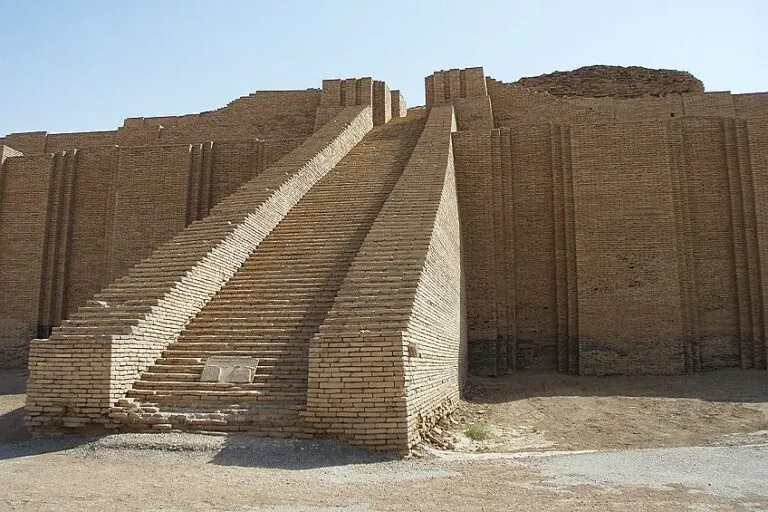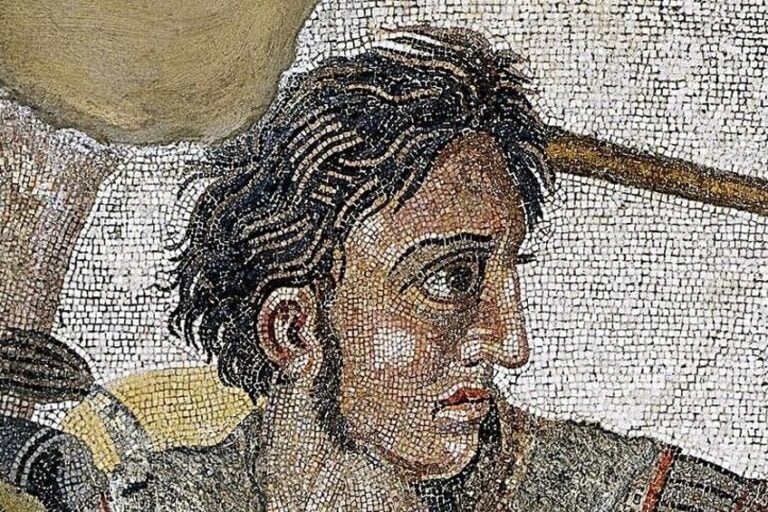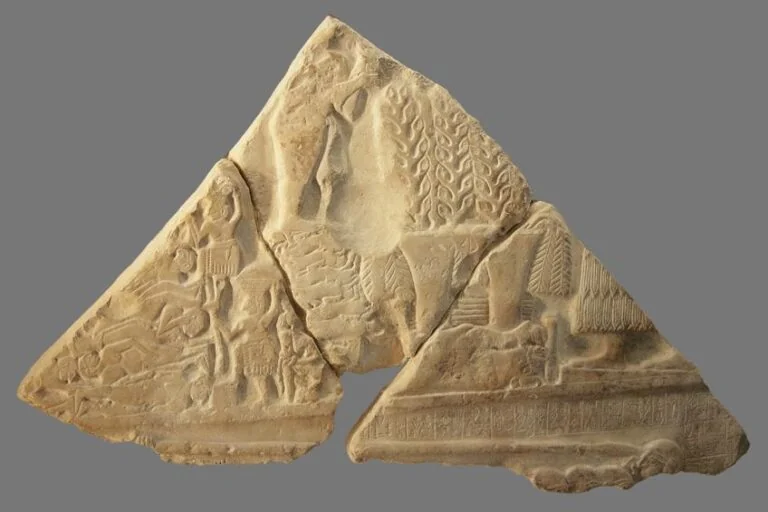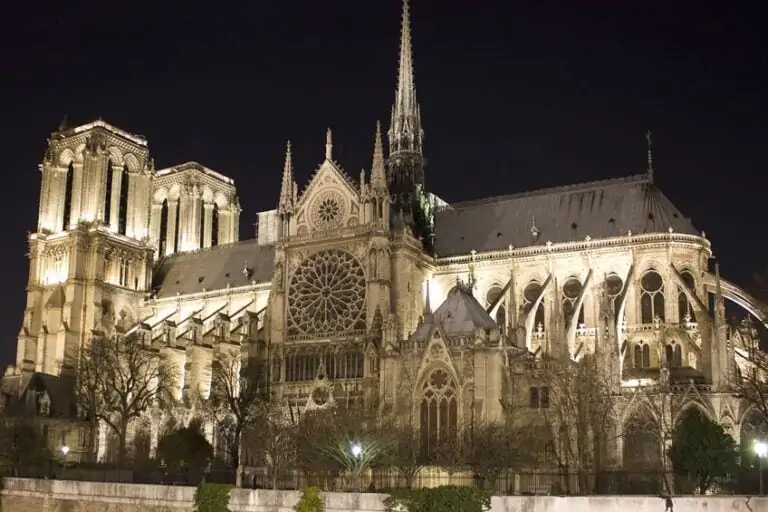Famous Greek Mythology Paintings – Ancient Greek Myths in Art
For centuries, Greek mythology has held a significant place in the art world as one of the most influential subjects in art history. From antiquity to the Renaissance and beyond, Greek mythology has captivated many artists to relive the aesthetics of Classical Greek art and explore new representations of characters from Greek mythology. In this article, we will introduce you to the top 10 most famous Greek mythology paintings in art history that have popularized many famous Greek gods and heroes in recent centuries.
Contents
- 1 The Complexities of Greek Mythology in Art
- 2 Exploring the Top 10 Most Famous Greek Mythology Paintings
- 2.1 Pallas and the Centaur (1482) by Sandro Botticelli
- 2.2 The Birth of Venus (c. 1485 – 1486) by Sandro Botticelli
- 2.3 The Triumph of Galatea (c. 1512) by Raphael
- 2.4 Narcissus (1597 – 1599) by Caravaggio
- 2.5 Leda and the Swan (c. 1598 – 1600) by Peter Paul Rubens
- 2.6 Cupid and Psyche (1798) by François Gérard
- 2.7 Oedipus and the Sphinx (1864) by Gustave Moreau
- 2.8 Pygmalion and Galatea (1890) by Jean-Léon Gérôme
- 2.9 Perseus and Andromeda (1891) by Frederic, Lord Leighton
- 2.10 The Lament for Icarus (1898) by Herbert James Draper
- 3 Frequently Asked Questions
The Complexities of Greek Mythology in Art
The influence of Greek culture on Western art was first reflected in the artistic endeavors of many famous Renaissance artists who contributed to the revival of Greek and Roman mythology in art after the emphasis on Christian themes during the Medieval period. The use of Greek myth during the Renaissance forms part of a very complex route of transmission of ancient Greek mythology to modern audiences. The first to fall under the spell of Greek art and thought were the Romans, who famously conquered Greece militarily, but were then conquered by Greek culture in return.
Most ancient peoples took an adaptive approach to religion. That meant that when they encountered gods whose characteristics resembled those of their own gods, they would create a fusion. This was particularly true of Roman ideas regarding Greek gods and heroes.
The Romans borrowed extensively from ancient Greek literature, resulting in works that drew almost entirely from Greek originals, but featuring their Romanized counterparts. This literary tradition, written predominantly in Latin remained available but largely unread, to scholars throughout the Medieval period, even as knowledge of ancient Greece and its myths faded from European memory. Some ancient myths were used by Christian scholars as cautionary tales or re-interpreted from a Christian viewpoint, such as the 13th century retelling of the Greek myth of Pygmalion as an allegory of courtly Christian love.
 The History of Pygmalion from the Romance of the Rose (1327); n.n., Public domain, via Wikimedia Commons
The History of Pygmalion from the Romance of the Rose (1327); n.n., Public domain, via Wikimedia Commons
During the Renaissance, a renewed interest in what had preceded the Christian era meant that scholars began to rediscover these forgotten texts. Since the Roman Catholic church had retained Latin as its liturgical language, most Renaissance artists and scholars could read Roman books such as the Metamorphoses and the Aeneid which were based on ancient Greek mythology.
As a result, when we look at a painting such as Botticelli’s Birth of Venus (c. 1485 – 1486), the subject is the Roman goddess Venus, but the myth it references is of the birth of the Greek goddess Aphrodite, which dates all the way back to one of the oldest Greek poems, Hesiod’s Theogony.
In ancient Greece, the use of dramatic performances during festivals dedicated to Dionysus meant that playwrights used traditional stories about gods and heroes to explore and express a variety of themes. Since Greek city states awarded prizes for those plays considered the best, authors were encouraged to engage with Greek myth in increasingly creative ways. As a result of the influence of these plays, Greek myths acquired a complexity beyond the purely religious, delving instead into complex questioning of the human condition that greatly appealed to later audiences.
 Roman mosaic depicting actors with theater masks (mid 3rd Century CE); Sousse Archaeological Museum, CC BY-SA 3.0, via Wikimedia Commons
Roman mosaic depicting actors with theater masks (mid 3rd Century CE); Sousse Archaeological Museum, CC BY-SA 3.0, via Wikimedia Commons
Ancient Greek philosophy also had a significant influence on Renaissance thinkers and artists.
Medieval Christian Crusaders encountered the philosophy, science, and mathematics of the Greeks that had been retained and developed by the Byzantines and their Muslim conquerors. Many ancient Greek philosophers used Greek myths to explain their ideas. This notion that literature and art could be used to express ideas not found in religion fueled one of the most important revolutions in Western culture. As a result, the style of Classical Greek sculpture and the narratives of ancient Greek myth became synonymous with the humanism of the Renaissance.
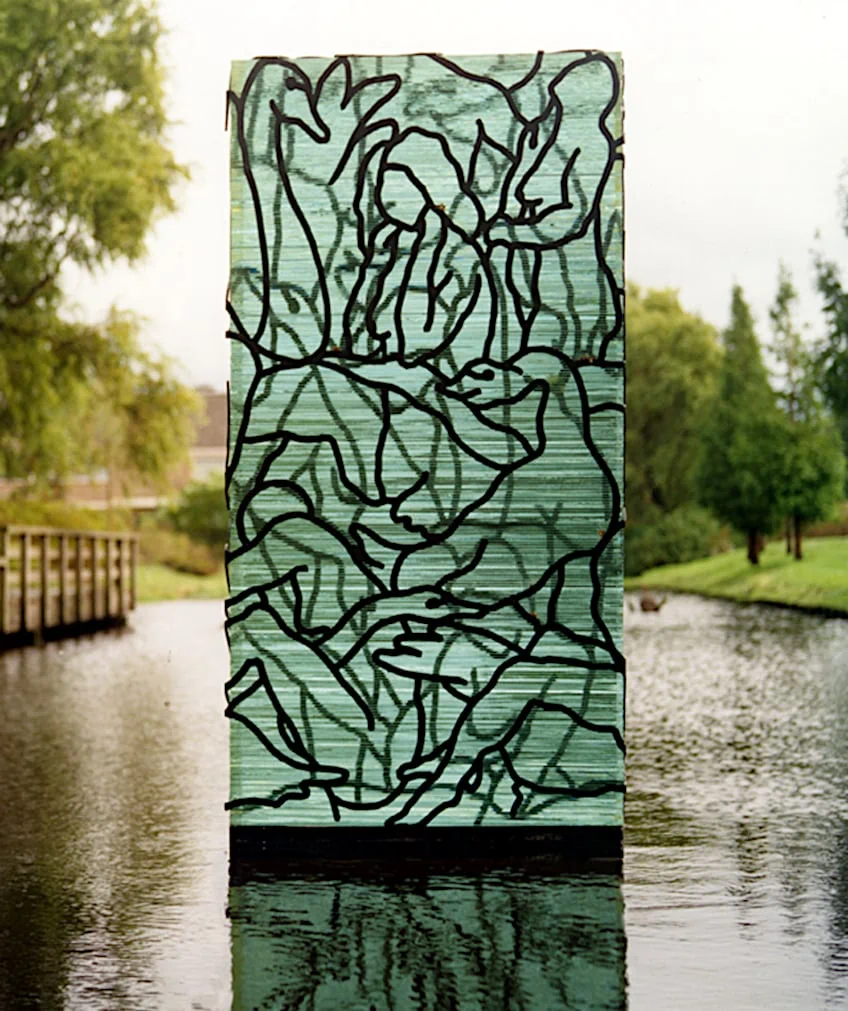 Leda and the Swan by Bert van Loo (1999); Bert van Loo, CC BY-SA 3.0, via Wikimedia Commons
Leda and the Swan by Bert van Loo (1999); Bert van Loo, CC BY-SA 3.0, via Wikimedia Commons
The rich history of Greek mythology has long provided artists with a diverse range of subjects to explore as it pertains to the human condition, morality, emotions, and other complex narratives.
In ancient Greece, vase painters explored a wide range of approaches to Greek myths, including highly individualistic interpretations, while Greek sculpture reflected more conventional religious and civic characteristics of gods and heroes. These at times contradictory uses of Greek Myth in art has persisted even into the Contemporary period. This means that any artwork based on Greek mythology requires close interpretation as it may hold a vast range of unexpected meanings.
Exploring the Top 10 Most Famous Greek Mythology Paintings
From the renaissance, through the Baroque, Neoclassical, and even Modernist periods, artists such as Raphael, Jean-Auguste-Dominique Ingres, Jacques-Louis David, and even Pablo Picasso explored Greek mythology art. The expressive power of Greek myth can be recognized in many famous paintings, the best of which we will dive into below!
Pallas and the Centaur (1482) by Sandro Botticelli
| Artist Name | Alessandro di Mariano di Vanni Filipepi (Sandro Botticelli) (1445 – 1510) |
| Date | 1482 |
| Medium | Tempera on canvas |
| Dimensions (cm) | 207 x 148 |
| Where It Is Housed | Uffizi Gallery, Florence, Italy |
Pallas and the Centaur is perhaps one of the most famous Greek mythology paintings of the 15th century created by Sandro Botticelli as a complementary painting to his iconic piece Primavera (c. 1470s – 1480s). Botticelli used tempera to create many large-scale paintings, which resulted in necessary retouches on the painting.
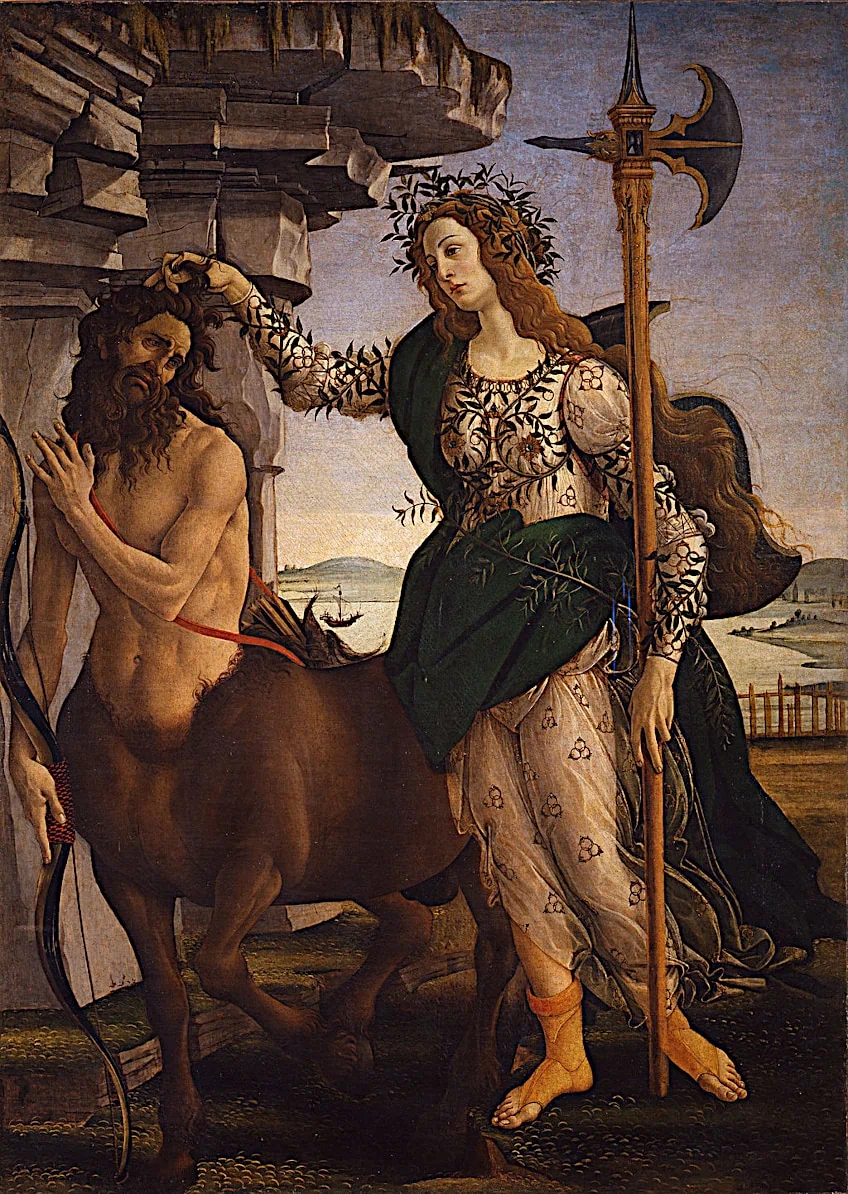 Pallas and the Centaur by Sandro Botticelli (1482); Sandro Botticelli, Public domain, via Wikimedia Commons
Pallas and the Centaur by Sandro Botticelli (1482); Sandro Botticelli, Public domain, via Wikimedia Commons
The figures are an example of allegory inspired by classical mythology art and contain a centaur and a woman holding a halberd. The woman appears to pull on the centaur’s hair, whose expression bears submissive emotion.
The woman is believed to be Pallas Athene or the personification of the city of Florence, Florencia. Centaurs are traditionally associated with uncontrolled sensuality and lust and have since inspired many philosophical debates around the true meaning of the painting. The painting is speculated to be part of a commissioned series of works created by Botticelli for Lorenzo de Medici, which was later acquired by the Uffizi Gallery in 1922.
The Birth of Venus (c. 1485 – 1486) by Sandro Botticelli
| Artist Name | Alessandro di Mariano di Vanni Filipepi (Sandro Botticelli) (1445 – 1510) |
| Date | c. 1485 – 1486 |
| Medium | Tempera on canvas |
| Dimensions (cm) | 172.5 x 278.5 |
| Where It Is Housed | Uffizi Gallery, Florence, Italy |
Among the many famous Greek paintings of gods is the painting depicting the origins of Aphrodite, or Venus as per Roman mythology known as The Birth of Venus. This iconic painting was created by the prominent Italian painter Sandro Botticelli, who was well-respected among the upper-class families of the Renaissance. Botticelli’s works reveal his fascination, or perhaps his clientele’s, with Greek mythological figures such as Aphrodite, who was also identified as Venus in Roman culture. The Birth of Venus is among his most famous paintings, which stand out in art history for its composition and unusual proportion of the deity’s figure.
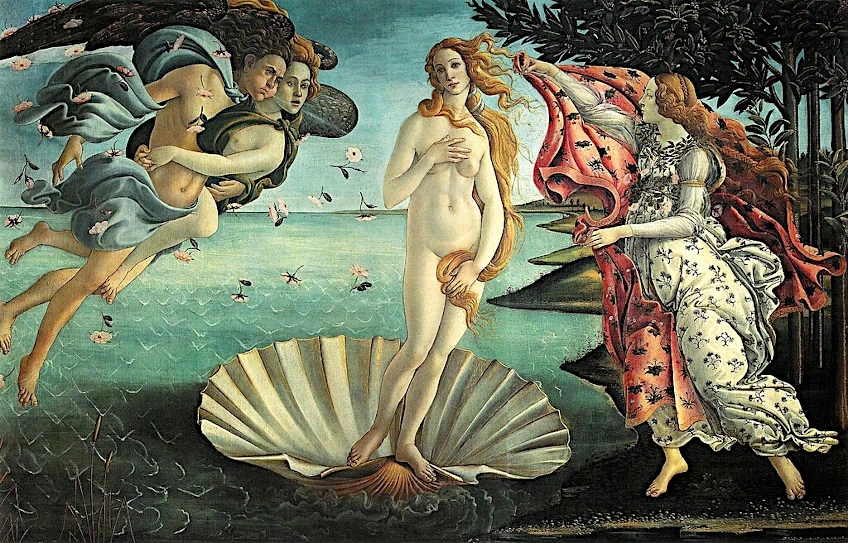 The Birth of Venus by Sandro Botticelli (c. 1485); Sandro Botticelli, Public domain, via Wikimedia Commons
The Birth of Venus by Sandro Botticelli (c. 1485); Sandro Botticelli, Public domain, via Wikimedia Commons
The painting was created in 1486 and presents Aphrodite, the Greek goddess of love, beauty, and fertility, at the moment of her introduction into the world.
In the composition, one can also spot Zephyr, the wind god, who blows the wind that ushers Aphrodite to the shore. The flatness of the work and its surreal nature continues to attract criticism for its unconventional approach, which undoubtedly left an unforgettable image. The work was commissioned by the Medici family, who commissioned many celebrated paintings inspired by Greek mythology art and were later exiled for their corruption.
The Triumph of Galatea (c. 1512) by Raphael
| Artist Name | Raffaello Sanzio da Urbino[ (Raphael) (1483 – 1520) |
| Date | c. 1512 |
| Medium | Fresco |
| Dimensions (cm) | 295 x 225 |
| Where It Is Housed | Villa Farnesina, Rome, Italy |
The Triumph of Galatea is among the most famous Greek mythology paintings in art history that were created by none other than Raphael, who was a master fresco artist of the 16th century. Raphael was a celebrated Italian painter and architect who is today considered among the trinity of master painters. The fresco was created for the villa of an art patron and banker known as Agostino Chigi, who was not only one of the wealthiest men in Italy at the time but was also behind the construction of the Farnesina villa in Rome, Italy.
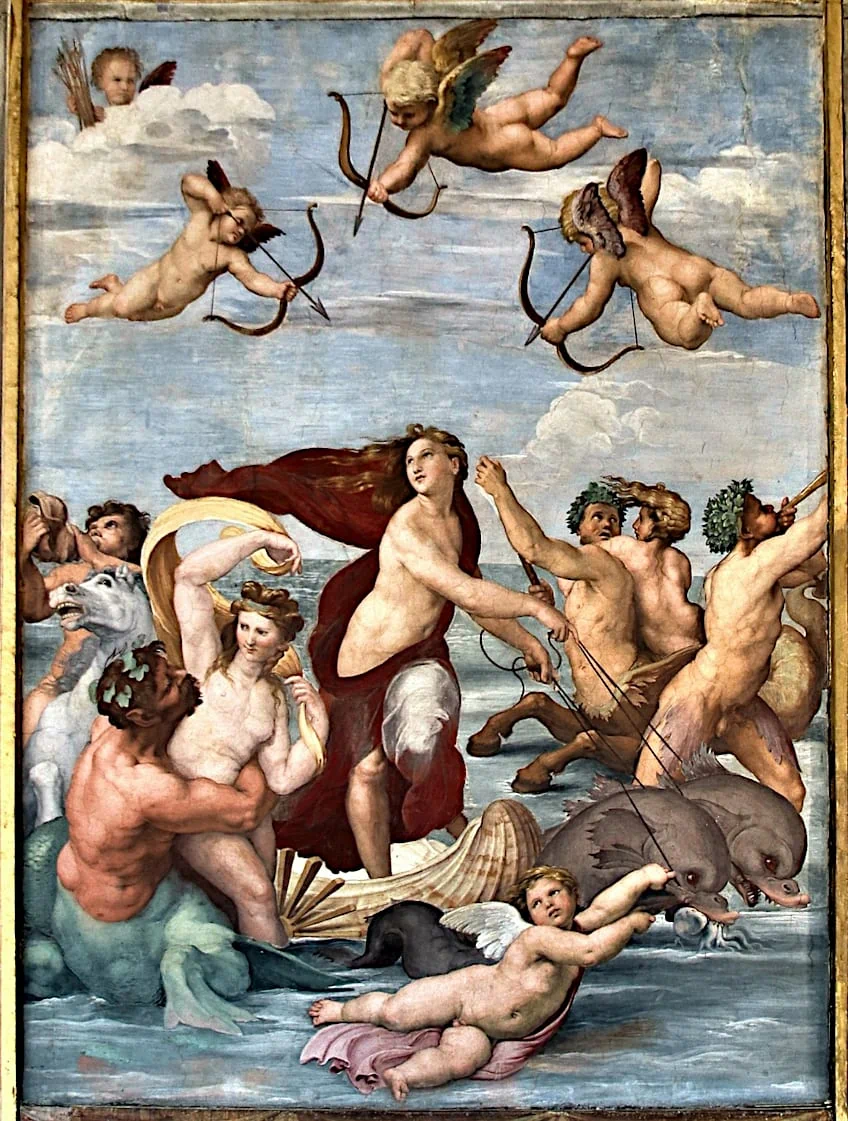 The Triumph of Galatea by Raphael (c. 1512); Vicenç Valcárcel Pérez, CC BY-SA 4.0, via Wikimedia Commons
The Triumph of Galatea by Raphael (c. 1512); Vicenç Valcárcel Pérez, CC BY-SA 4.0, via Wikimedia Commons
The fresco was painted in the villa and portrays the mythical scene of a sea nymph named Galatea who fell in love with Acis, a peasant shepherd. According to the story, her lover was killed by Galatea’s consort, a one-eyed giant named Polyphemus.
While Raphael did not depict any scene from the main parts of the story, he chose to represent the divinization of Galatea who appears surrounded by a party of sea creatures. The figures around Galatea were speculated to have been inspired by the work of Michelangelo. It has also been speculated that the model for Galatea was Imperia, the lover of Agostino Chigi.
Narcissus (1597 – 1599) by Caravaggio
| Artist Name | Michelangelo Merisi da Caravaggio (1571 – 1610) |
| Date | 1597 – 1599 |
| Medium | Oil on canvas |
| Dimensions (cm) | 110 x 92 |
| Where It Is Housed | Galleria Nazionale d’Arte Antica, Rome, Italy |
Another well-known myth from Ovid’s Metamorphoses was the story of Narcissus, who fell in love with his reflection and even died from his own self-directed passion. For most Renaissance artists, the story of Narcissus was appealing and drew in the master painter Caravaggio, who was already inspired by Greek mythology art.
Caravaggio portrayed Narcissus in his classical chiaroscuro style with dramatic contrasts between the light and darkness of the painting, such that it directly draws one’s attention to the themes of good and evil.
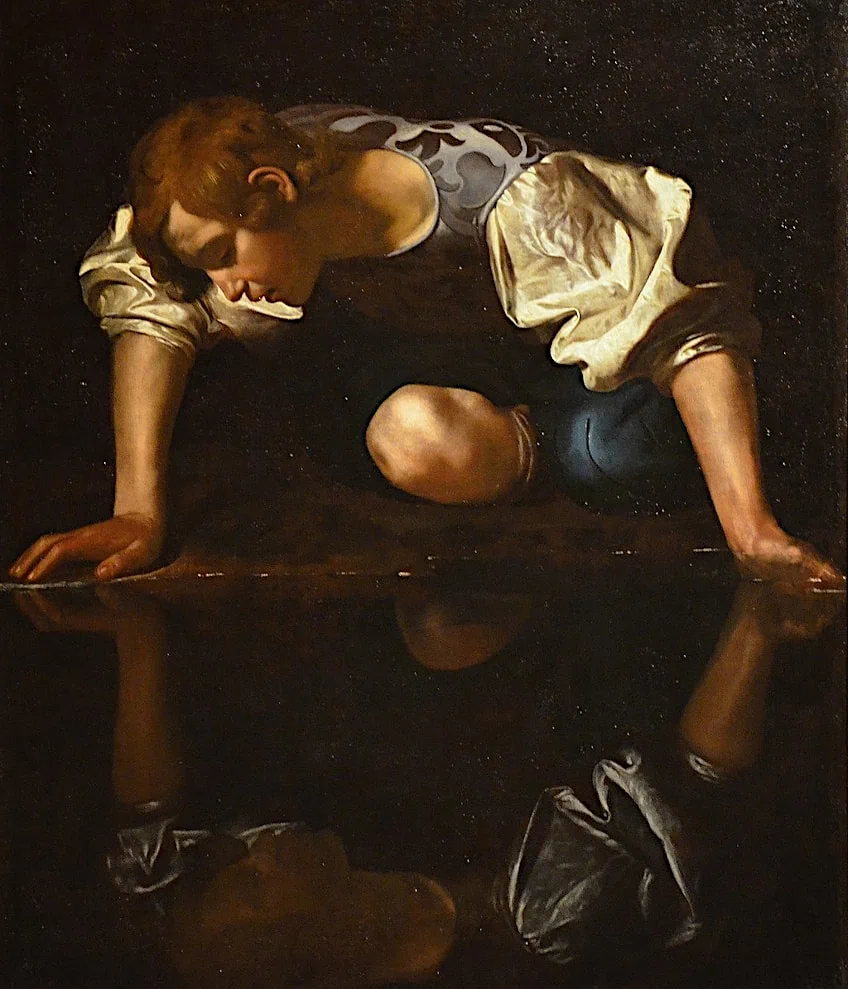 Narcissus by Caravaggio (1597-1599); Caravaggio, CC BY-SA 2.0, via Wikimedia Commons
Narcissus by Caravaggio (1597-1599); Caravaggio, CC BY-SA 2.0, via Wikimedia Commons
The painting portrays Narcissus gazing into a pool of water and dressed not in ancient Greek garb, but in clothing common in Italy at this perios. His reflection is distorted by the water and reminds one of a melancholic moment expressed through the darkness that surrounds Narcissus and his soon-to-be tragic demise.
Leda and the Swan (c. 1598 – 1600) by Peter Paul Rubens
| Artist Name | Sir Peter Paul Rubens (1577 – 1640) |
| Date | c. 1598 – 1600 |
| Medium | Oil on oak wood panel |
| Dimensions (cm) | 64.5 x 80.5 |
| Where It Is Housed | Old Masters Picture Gallery, Dresden, Germany |
This famous Greek mythology painting was created by Sir Peter Paul Rubens before 1600 and is considered to be among the most well-known representations of the Greek myth found in Ovid’s Metamorphoses. The painting showcases Leda, the daughter of King Thestios, who was married to a Spartan king called Tyndareos.
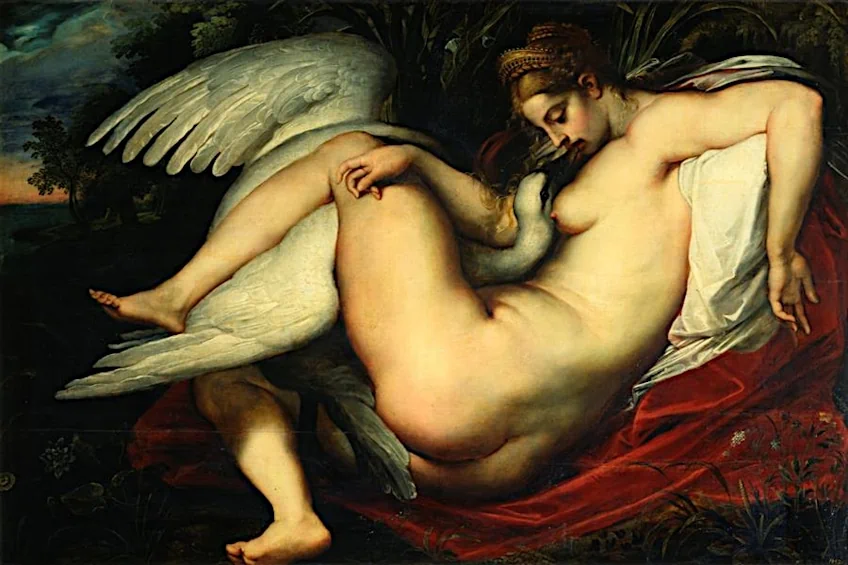 Leda and the Swan by Peter Paul Rubens (1598-1600); Peter Paul Rubens, Public domain, via Wikimedia Commons
Leda and the Swan by Peter Paul Rubens (1598-1600); Peter Paul Rubens, Public domain, via Wikimedia Commons
Zeus, the king of the gods took the form of a swan to seduce Leda. In the painting Zeus and Leda are locked in an embrace in the river Eurotas, where Leda would frequently take a bath. This liaison resulted in two sets of twins born from an egg. Two of these children were Zeus’ son Pollux and his daughter Helen (who would become the cause of the Trojan War) while the anther son and daughter were Tyndareos’ offspring.
Leda and the Swan is an erotically charged painting that also showcases Rubens’ mastery over texture and color as seen in the depiction of the swan’s plumage and the warm-toned skin of Leda.
Cupid and Psyche (1798) by François Gérard
| Artist Name | François Pascal Simon Gérard (1770 – 1837) |
| Date | 1798 |
| Medium | Oil on canvas |
| Dimensions (cm) | 186 x 132 |
| Where It Is Housed | Louvre Museum, Paris, France |
François Gérard was a famous French artist of the 18th century whose paintings of women were often accompanied by frank expressions, as seen in the face of Psyche. The myth of Eros (Cupid) and Psyche from Greek mythology has been one of the most popular myths for artists to explore, due in part to the role played by sight in the myth. Eros/Cupid had fallen in love with Psyche against the wishes of his mother Aphrodite/Venus. To keep his secret he only visited Psyche at night so that she could not see who he was. When Psyche’s sisters convinced her that her lover was a monster she looked at him while he slept, at which point he abandoned her. Cupid and Psyche are featured in around nine different famous paintings, including this famous composition by François Gérard, painted in 1798.
The myth was commonly interpreted as a testament to overcoming the challenges of love, expressed through Eros/Cupid (Desire) and Psyche (Soul) who has to endure a tortuous series of tasks set by Aphrodite to compensate for her lack of trust.
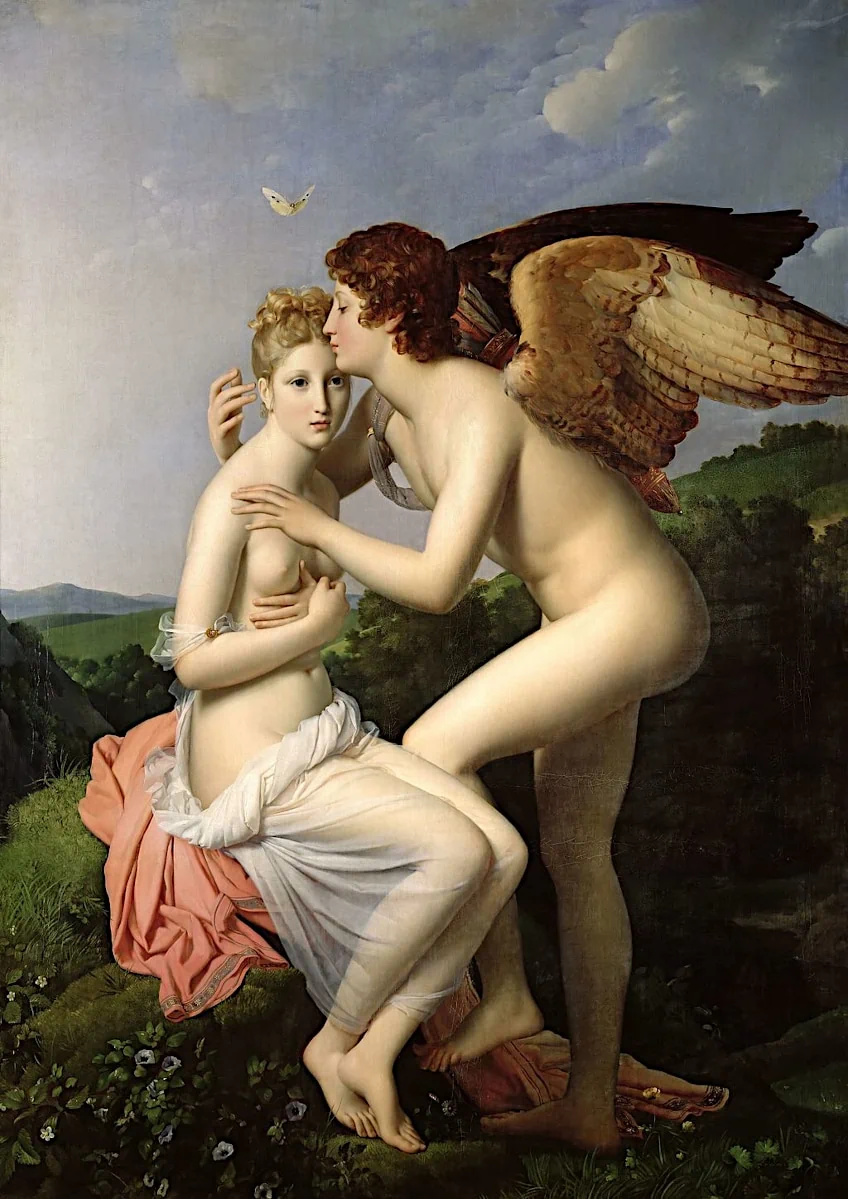 Cupid and Psyche or Psyche Receiving Cupid’s First Kiss by François Gérard (1798); François Gérard, Public domain, via Wikimedia Commons
Cupid and Psyche or Psyche Receiving Cupid’s First Kiss by François Gérard (1798); François Gérard, Public domain, via Wikimedia Commons
Oedipus and the Sphinx (1864) by Gustave Moreau
| Artist Name | Gustave Moreau (1826 – 1898) |
| Date | 1864 |
| Medium | Oil on canvas |
| Dimensions (cm) | 206 x 105 |
| Where It Is Housed | The Metropolitan Museum of Art, New York City, United States |
This painting was created by Gustave Moreau and portrays a scene from the tragic play written by Sophocles, Oedipus Rex. According to the myth, Oedipus was raised by adoptive parents. While visiting an oracle he was told that he would murder his father and marry his mother. Distraught, he fled his home to avoid his fate. However, during his travels he got into an argument with his true father Laius, the king of Thebes and killed him. Then outside of Thebes Oedipus encounters a sphinx sent by the gods to punish the city for the crimes of their former ruler.
The sphynx would set a riddle and kill anyone who could not solve it. According to some accounts she asked “which creature walks on four legs in the morning, two legs at noon, and three in the afternoon?” When Oedipus correctly answered “man” the monster plunged off a cliff to her death.
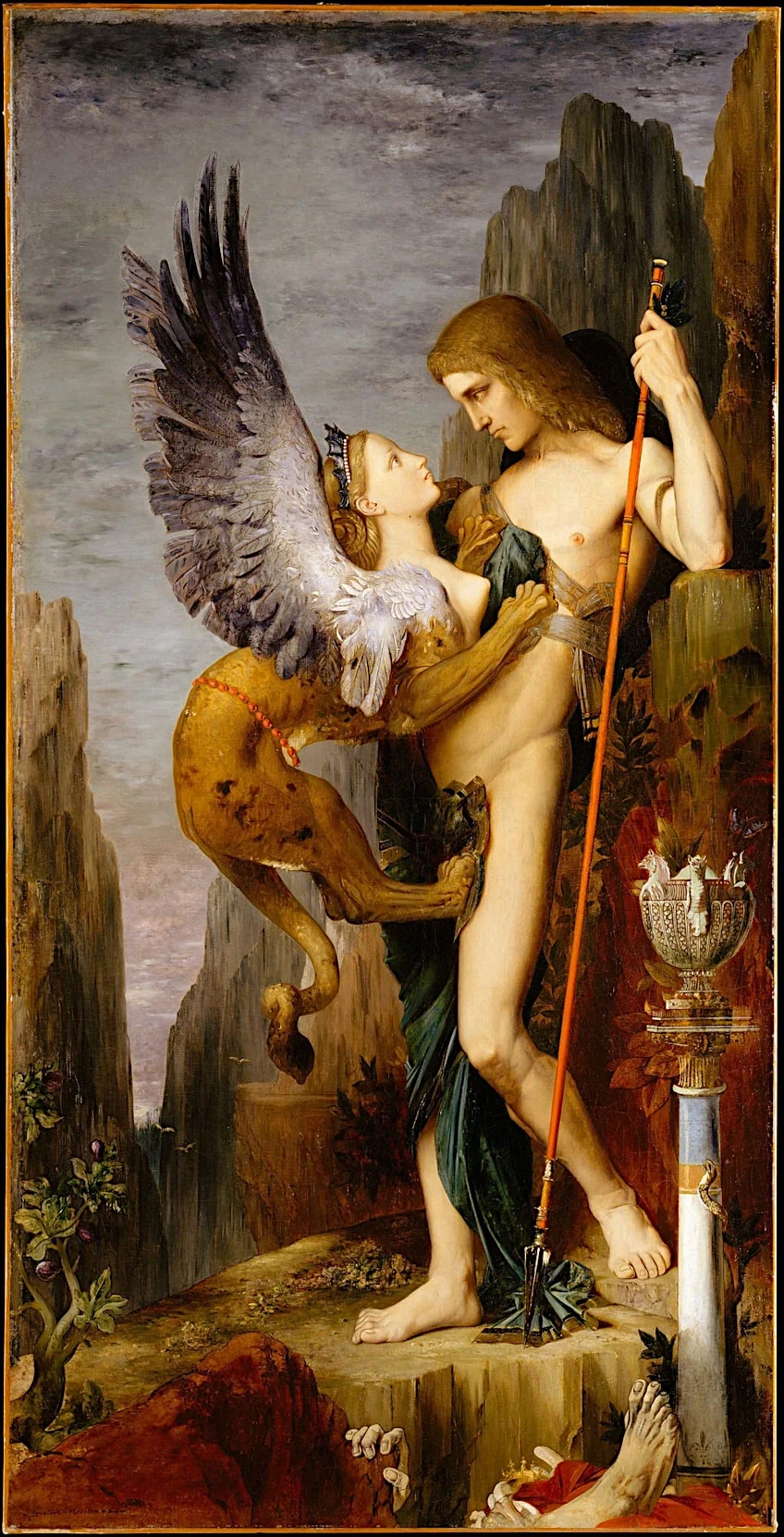 Oedipus and the Sphinx by Gustave Moreau (1864); Gustave Moreau, Public domain, via Wikimedia Commons
Oedipus and the Sphinx by Gustave Moreau (1864); Gustave Moreau, Public domain, via Wikimedia Commons
The sphinx vanquished, Oedipus was proclaimed king of Thebes and married the queen, who unbeknownst to him was his biological mother. When Oedipus discovered the truth he gouged out his eyes and went into exile. Upon his death, he was swallowed by the Earth and transformed into a guardian of the land in a local town in Athens. In Oedipus and the Sphinx, Moreau removes all forms of Naturalism and Realism to portray an imagined scene where the viewer is made uncertain of the fate of Oedipus as the sphinx claws at his body. The myth of Oedipus represents to futility of trying to escape one’s fate. It remains an iconic part of Greek mythology that continues to inspire artists.
In Freud’s psychoanalytical theories, the Oedipus complex is a young man’s innate desire to do away with his father so that he can have all of his mother’s attention for himself.
Pygmalion and Galatea (1890) by Jean-Léon Gérôme
| Artist Name | Jean-Léon Gérôme (1824 – 1904) |
| Date | 1890 |
| Medium | Oil on canvas |
| Dimensions (cm) | 89 x 67 |
| Where It Is Housed | The Metropolitan Museum of Art, New York City, United States |
Famous painter of the academicism movement, Jean-Léon Gérôme, was once the most famous artist of the 1880s. Gérôme specialized in Greek mythology painting as well as historical subjects, portraits, and Orientalism. Toward the end of his career, Gérôme grew critical of the Impressionist movement and was also in a period where preferences for his own work declined in popularity. During this time, he continued to work on classical subjects, including Pygmalion and Galatea, which narrates the story of one of the most influential Greek tales involving a sculptor who crafted his dream woman.
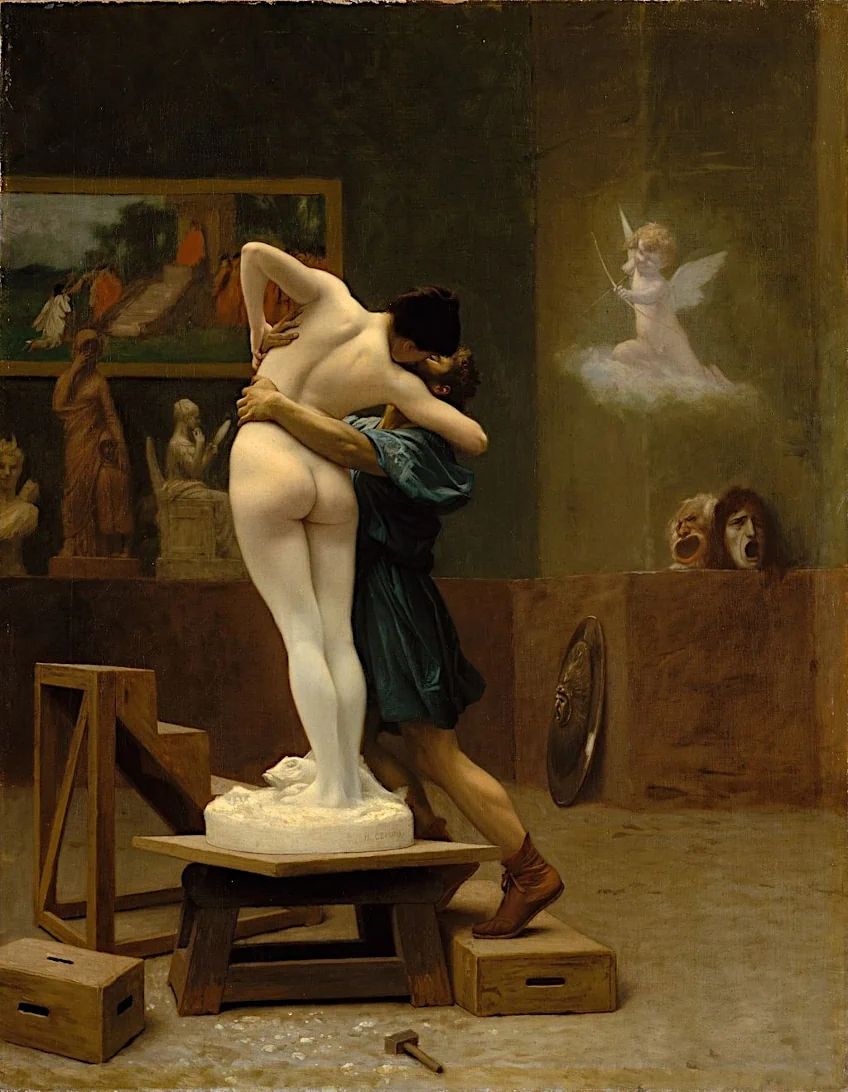 Pygmalion and Galatea by Jean-Léon Gérôme (1890); Jean-Léon Gérôme, Public domain, via Wikimedia Commons
Pygmalion and Galatea by Jean-Léon Gérôme (1890); Jean-Léon Gérôme, Public domain, via Wikimedia Commons
Obsessed and frustrated with women in general, the sculptor, Pygmalion, sought to correct the flaws he saw in women through sculpture. So perfect was this creation that the sculptor became obsessed with his sculpture, speaking to it and presenting it with lavish gifts. Aphrodite noticed the artist infatuation and granted life to the statue. The two were wed and later had a son named Paphos, whose name was used to name a sacred city in Cyprus. In most versions of the myth, Galatea makes Pygmalion’s life miserable until he begs Aphrodite to make her a sculpture again.
The story of Pygmalion and Galatea has inspired many artists and playwrights to reproduce the narrative through painting, literature, and theater, with iconic works by George Bernard Shaw whose Pygmalion was reworked into the musical My Fair Lady on which the film Pretty Woman was based in turn.
Perseus and Andromeda (1891) by Frederic, Lord Leighton
| Artist Name | Sir Frederic Leighton (1830 – 1896) |
| Date | 1891 |
| Medium | Oil on canvas |
| Dimensions (cm) | 1292 x 2350 |
| Where It Is Housed | Walker Art Gallery, Liverpool, United Kingdom |
Perseus and Andromeda are among the most well-known English paintings featuring Greek mythology and were created by Sir Frederic Leighton in 1891. Leighton was a prominent Victorian sculptor and painter who was part of a collective of artists who created many sculptures of Greek Gods and paintings inspired by legends throughout the 19th century. Leighton’s style in Perseus and Andromeda was characterized by the heavy detail and dramatic posing reminiscent of Romantic painting.
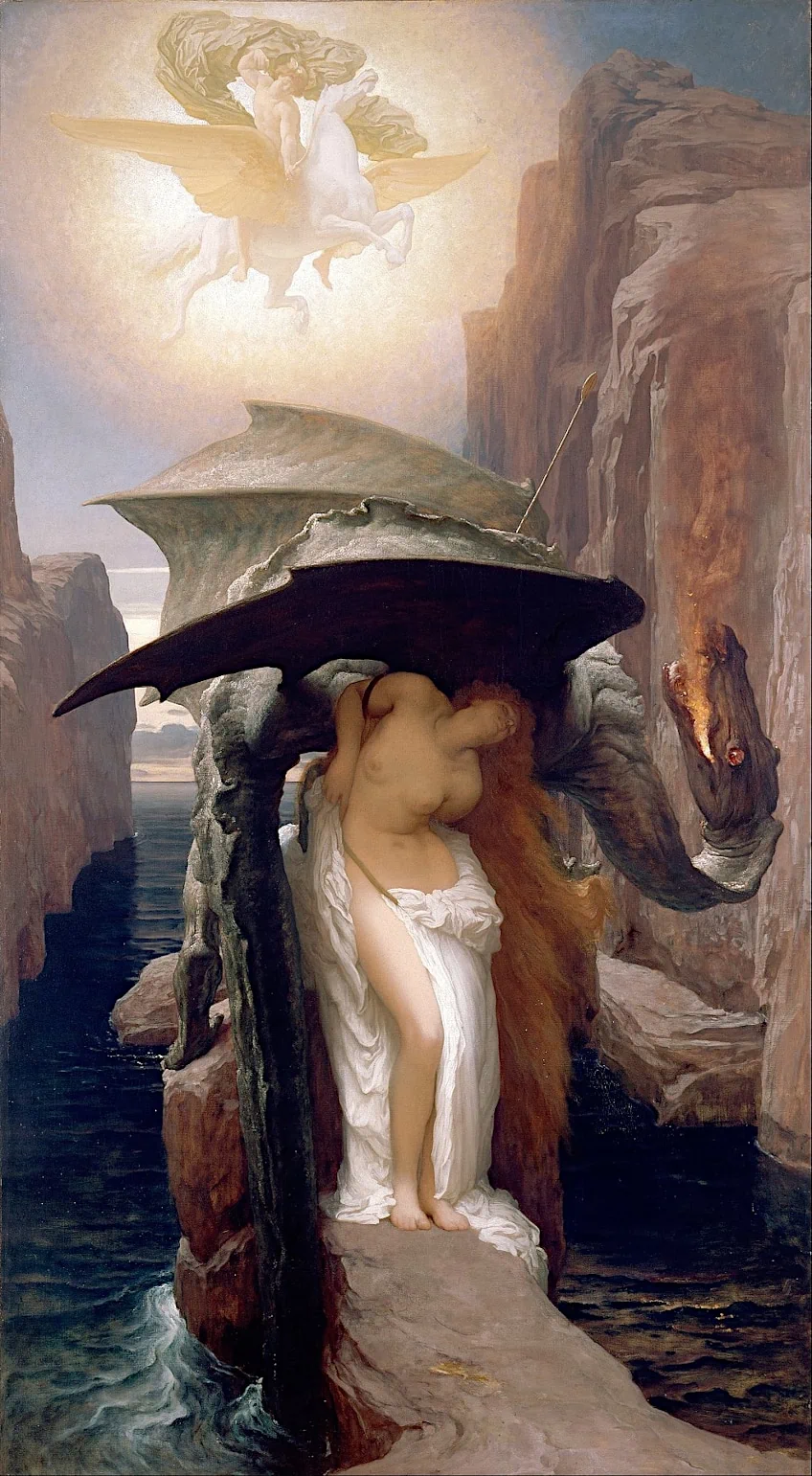 Perseus and Andromeda by Frederick Leighton (1891); Frederic Leighton, Public domain, via Wikimedia Commons
Perseus and Andromeda by Frederick Leighton (1891); Frederic Leighton, Public domain, via Wikimedia Commons
The scene portrayed in the painting has since inspired many artists and filmmakers. The composition features the mythical figure Andromeda at the precise moment when she encountered the sea monster.
Andromeda was illustrated in a way that alluded to her innocence as a victim of the drama that ensued between the Queen of Ethiopia and the Nereids (sea nymphs). Leighton’s masterful use of contrast between the dragon’s dark scales and Andromeda’s skin reflects the height of his linear rhythmic style in his late career. In Greek mythology, Perseus was not a god, but a hero who was also semi-divine since his father was Zeus.
The Lament for Icarus (1898) by Herbert James Draper
| Artist Name | Herbert James Draper (1863 – 1920) |
| Date | 1898 |
| Medium | Oil on canvas |
| Dimensions (cm) | 180 x 150 |
| Where It Is Housed | Tate Britain, London, United Kingdom |
The Lament for Icarus is one of the most famous Greek mythology paintings of the late 19th century that portrays the grieving nymphs who surround the body of Icarus. The painting was created by English Neoclassical painter Herbert James Draper, who used the bird-of-paradise pattern to portray the wings of Icarus. In 1900, the painting was so well-received that Draper was awarded a gold medal at the Exposition Universelle held in Paris.
The emphasis on Greek mythological subjects in the curricula of most art academies meant that the 1890’s saw many artists focus on Greek mythology in their careers and Draper was not an exception.
 The Lament for Icarus by Herbert James Draper (1898); Herbert James Draper, Public domain, via Wikimedia Commons
The Lament for Icarus by Herbert James Draper (1898); Herbert James Draper, Public domain, via Wikimedia Commons
Draper was also inspired by the work of Frederic Leighton, who previously portrayed Icarus in a painting that illustrated Icarus’ preparations for his flight, but Draper chose to portray his death with four separate figures in a late-Victorian style. The composition borrowed from the late-Victorian style through the use of Icarus’ body as a tool for the projection of subjective emotion. The tale of Icarus who flew too close to the sun was further evoked by the warm-toned color palette of the scene and encompassed the overarching theme of an epic failure.
The allure of Greek mythology is a subject that continues to intrigue and inspire many artists to pursue their personal philosophical inquiries into the complex symbolic world of antiquity beliefs. These famous Greek mythology paintings also demonstrate the influence of Greek mythology on artists of the Renaissance and their fascination with the heroic figures, deities, and monsters of the Greek world.
Frequently Asked Questions
What Are the Top Three Most Famous Greek Mythology Paintings?
The top three most famous paintings that were inspired by Greek mythology include Sandro Botticelli’s Pallas and the Centaur (c. 1482), Caravaggio’s Narcissus (c. 1599), and Jean-Léon Gérôme’s Pygmalion and Galatea (c. 1890). If you include paintings of myths with a Greek origin but Roman names, then Botticelli’s Birth of Venus (c. 1485), Francisco Goya’s Saturn Devouring his Son (c. 1820 – 1823), and Leonardo da Vinci’s drawings for and other artist’s copies of his Leda and the Swan (1503 – 1510) should also make the list.
Which Famous Renaissance Artists Explored Greek Mythology in Painting?
Many well-known artists from the Renaissance period explored themes from Greek mythology in paintings. Greek myth-inspired Renaissance artwork was created by figures such as Sandro Botticelli, Raphael, Leonardo da Vinci, and Titian.
Do Artists Still Create Greek Mythology Paintings in the Contemporary Era?
Many artists have drawn inspiration from Greek mythology even into the Modernist and Contemporary periods, including artists such as Pablo Picasso, Cy Twombly, Richard Patterson, Matt Collishaw, Wangechi Mutu, Mark Rothko, and Joseph Beuys. Many Modern artists also looked toward art from Archaic, Classical, and even Hellenistic periods of ancient Greece as thematic repertoires and points for reinterpretation as modern myth creators.

I am deeply passionate about history and am constantly fascinated by the rich and complex stories of the past. As the editor-in-chief of learning-history.com, I have the opportunity to share this passion with a wide audience through the creation and distribution of engaging and informative content about historical events, persons, and cultures. Whether it’s through writing articles and blog posts or creating videos or podcasts, I strive to bring the past to life in a way that is both accurate and enjoyable. My expertise in history, combined with my strong writing and communication skills, allows me to effectively communicate complex historical concepts and make them accessible and interesting to a wide range of readers. I am truly grateful for the opportunity to share my love of history with others through my work on learning-history.com.

